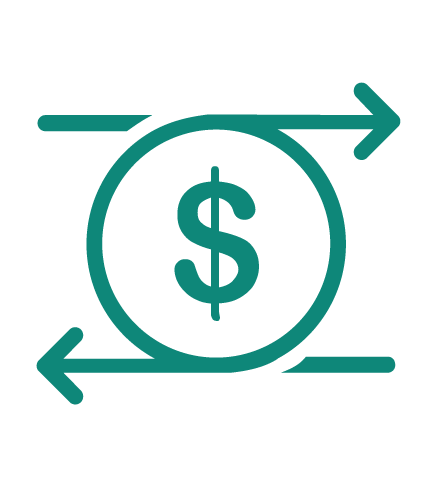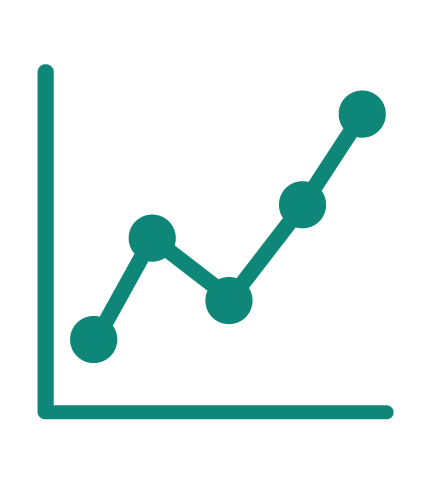Investment Outlook
We anticipate a volatile start to 2023, which could provide investment opportunities.
The global economic cycle appears to be transitioning from late expansion to downturn. But articulating the downturn’s starting point is proving very difficult.
On one hand, areas of strength include corporate earnings growth, which has been decelerating but is positive in most regions. Also, we have seen only a marginal move higher in global unemployment rates, despite slowing economic growth and aggressive monetary policy tightening. But ultimately, we expect the lagged effect of monetary policy to prevail and put additional downward pressure on earnings and economic growth.
Investment Themes: Key Takeaways
Our take on macro drivers and major asset classes at a glance.
While we see indications of inflation having peaked, the battle has not been won. We believe the Federal Reserve (Fed) would welcome signs of labor market weakness.
A pivot toward rate cuts would likely require a recession, consistent downside inflation surprises and evidence of labor market slack.
Bouts of risk aversion could lead to strong performance for the US dollar, but country-specific catalysts could help drive returns in certain currencies.
Taking advantage of market dislocations during heightened volatility could be an effective way to potentially generate alpha in this late cycle regime.
Our recommended allocation expresses a cautious view. We believe in an opportunistic investment approach for 2023, especially when market volatility shifts valuations.
Macro Drivers
Labor market resilience has helped keep the US economy from slipping into recession.
- Inflation pressures will likely keep central bankers uncomfortable throughout the first half of 2023. For example, the Bank of Japan (BoJ) and notably the European Central Bank (ECB) are likely to get incrementally more hawkish.
- The Fed is set to deliver another hike in February, likely 25 basis points, but it could pause thereafter should inflation continue to head lower.
- Supply chain bottlenecks were a primary driver of inflation during the pandemic, but that issue is largely in the past.
- Slower economic growth and less robust labor markets are needed to help get inflation under control globally.
- Slowing job gains and eventual layoffs could prevent the wage-price spiral from taking hold more aggressively. Striking the right balance won’t be easy in our view, and a downturn could be unavoidable.
- While corporations have been adding jobs of late, we are on the lookout for a shift in hiring patterns.
Credit
Credit spreads appear tight at this late stage of the cycle, but benchmark yields could offer compelling compensation.
- The Loomis Sayles US credit risk premium framework suggests underlying fundamentals are currently solid. Our tool suggests the possibility of earning positive excess returns during the next six months is above median.
- We believe losses due to credit rating downgrades within the US investment grade corporate sector should remain historically low. The Loomis Sayles High Yield Sector Team expects the US high yield default rate to rise from its December 2022 level of 1.4% toward 4.0% by late 2023 in the event of an economic downturn. While a large increase, a 4.0% default rate would be relatively low compared to past downturns.
- A weakening global economy is likely to usher in more volatility throughout the first two quarters of 2023, but that can bring opportunity for bottom-up security selection.
- Risk aversion, driven by macroeconomic developments, will likely ebb and flow, impacting many credits. Therefore, we would seek to invest if disconnects between current market value and fair value emerge.
- Bumpy markets throughout 2023 could offer multiple opportunities to invest in global credit for the long term.
Government Debt & Policy
Fiscal and monetary authorities across the world want to see inflation lower, perhaps even at the expense of growth.
- Yields across developed and emerging markets ratcheted higher in 2022 driving government borrowing costs up substantially. The path forward may be differentiated by various central bank expectations.
- The Fed could pause on hikes in early 2023. As a result, we believe US Treasury yields may have already hit their cycle peak. The ECB, on the other hand, just delivered more-hawkish-than-expected views for 2023. Consequently, yields in the eurozone could continue higher even if Treasurys do not follow.
- Even if government bond yields have stopped rising, we do not expect a significant retreat. In our view a return to yields seen at the start of 2022 is highly unlikely in 2023.
- After months of enforcing a zero-COVID-19 program that stymied growth, China has loosened restrictions on citizens. The initial phase of reopening is likely to be chaotic as COVID cases will likely surge, but we believe China may bounce back with around 5% real growth in 2023.
- Excessive inflation limits the monetary and fiscal response to the next downturn. We do not think investors should expect a wide sweeping rescue, particularly if the downturn begins in mid-2023.
Currencies
A steadfast ECB could counterbalance US dollar strength as the Fed’s hiking cycle comes to a pause, while hiking continues in Europe.
- Concern of a downturn is prevalent. If one develops, we would expect “safe-haven” flows to ensue and contribute to US dollar strength.
- The Fed’s rapid tightening cycle could pause in early 2023. This could take some upward pressure off the dollar, especially if other developed market central banks remain engaged in hiking.
- With the UK’s 2022 political drama settled, a case for pound sterling stability can be made. A step toward eventual tighter policy by the BoJ could drive a less volatile yen in 2023.
- With nearly all central banks striking a hawkish tone, the one-way bullish US-dollar trend could be challenged. Investors can be selective and identify idiosyncratic opportunities across countries.
- We expect oil prices to remain firm. The Canadian dollar and Norwegian krone could do well given these expectations. Latin America is currently a preferred region to add foreign exchange exposure in our view, particularly in Mexico, Brazil and Colombia.
Equities
Tighter financial conditions, slowing nominal GDP and declining profit margins will likely lead S&P 500 consensus earnings estimates lower for calendar year 2023.
- Global equity price-to-earnings multiples are unlikely to expand until central banks begin to ease restrictive monetary policy—an unlikely shift anytime soon.
- Equity markets could struggle to make headway until there is more clarity on the economy and a path for earnings growth in the second half of 2023.
- We believe the first half of 2023 will be a delicate dance where central banks work to lower inflation by slowing the economy, which likely means a hit to corporate fundamentals—including revenue growth and profit margins.
- Companies have done well pushing higher prices through to end users, but as inflation slows, often so does pricing power. With less pricing power, we could see profit margins drifting lower but not collapsing.
- A global economic slowdown and weaker operating environment for corporations appears to have already been priced in to equity markets. A downturn, where central banks continue to fight inflation by raising, or at least holding steady, policy rates, has not been fully priced in our view.
Potential Risks
Many are anticipating a mild global downturn, but we see significant upside and downside risks to that view.
- Two key pillars of the macro economy, corporate profits and the labor market, may keep the expansion alive despite stubborn inflation. We cannot see a downturn taking hold without meaningful job losses, rising unemployment rates and a profits recession.
- Corporate health is still in decent shape despite central bank tightening and higher interest rates. While not entirely likely, a soft landing remains possible if deterioration in corporate fundamentals is limited while inflation cools faster than anticipated.
- Sentiment is generally negative across economists and market strategists. Therefore, any positive developments within the economic, policy or geopolitical landscape could spark a risk-asset recovery.
- Downside risks are anchored to stubborn inflation that does not decline fast enough to align with central-bank targets. Central banks could tighten into a recession in order to restore long-term price stability.
- Holding policy rates higher for longer to stamp out inflation represents another potential hit to asset valuations. Unemployment could head toward 6.0% while corporate profits likely plunge.
Author

Craig Burelle
VP, Senior Macro
Strategies Analyst








